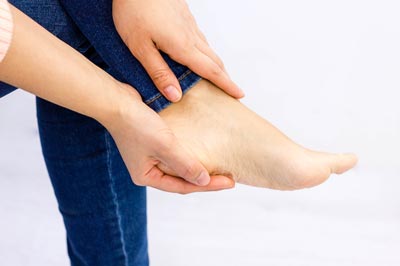Everything You Need to Know About Achilles Tendinitis and How to Treat It
Welcome to the world of Achilles Tendinitis! If you’ve been experiencing pain and stiffness in your heel or calf muscles, chances are you may be suffering from this common condition. It is important to understand how it develops and what steps need to be taken to manage symptoms and minimize long-term damage. In this post, we will uncover all about Achilles Tendinitis – from the causes, to diagnosis, available treatments (including traditional medical approaches as well as natural remedies), prevention tips and more.
What is Achilles Tendinitis and How Does it Impact You
Achilles tendinitis is a condition that affects the Achilles tendon, which is the largest tendon in the body. It connects the calf muscles to the heel bone and is responsible for helping you walk, run and jump. This condition occurs when the tendon becomes inflamed or irritated, leading to pain and stiffness in the area. It’s a common injury that impacts athletes, especially those who engage in activities that involve a lot of jumping and running. If left untreated, Achilles tendinitis can worsen and lead to more severe problems, such as a ruptured tendon. Therefore, it’s important to seek medical attention as soon as you notice any symptoms, such as pain, swelling or stiffness, in your Achilles tendon. A doctor or sports medicine specialist can provide a diagnosis and develop an individualised treatment plan to help you recover and get back to your favourite activities.
Symptoms and Causes of Achilles Tendinitis
Achilles tendinitis is a painful condition resulting from the inflammation of the Achilles tendon. It typically occurs in athletes or individuals who engage in sports or other physical activities that involve repetitive movements of the feet and ankles. Symptoms of Achilles tendinitis include pain that worsens over time, stiffness in the Achilles tendon area, and a limited range of movement. The primary cause of Achilles tendinitis is overuse of the tendon, which can lead to micro-tears, scarring, and ultimately inflammation. Other factors that can contribute to the development of this condition include poor footwear, sudden increases in physical activity, and certain medical conditions. Early diagnosis and treatment are essential to managing the symptoms of Achilles tendinitis, and individuals experiencing any of these symptoms should seek medical advice promptly.

Achilles Tendinitis
Diagnosing and Treating Achilles Tendinitis
Achilles tendinitis is a common injury that can cause significant pain and discomfort in the back of the heel and calf. This condition is typically the result of overuse and repetitive strain on the tendon, which can cause it to become inflamed and weaken over time. For those experiencing symptoms, it is important to seek professional medical attention to properly diagnose and treat the condition. Treatment may include rest, physical therapy, and in some cases, surgery. With the help of a healthcare professional and a commitment to proper recovery, patients can successfully manage their Achilles tendinitis and return to their normal activities.
Prevention Tips to Avoid Developing Achilles Tendinitis
Achilles tendinitis is a condition that causes pain and discomfort in the Achilles tendon, located at the back of the ankle joint. The best way to avoid developing this painful condition is through prevention. There are several preventative measures that individuals can take to avoid experiencing the symptoms of Achilles tendinitis. Some of these measures include engaging in regular exercise, wearing proper footwear, maintaining a healthy weight, and stretching before and after physical activity. By following these tips, individuals can significantly reduce their risk of developing Achilles tendinitis and maintain optimal foot health. Remember, prevention is key to avoiding pain and discomfort in the Achilles tendon and subsequent limitations in mobility.
Home Treatments for Managing Symptoms of Achillies Tendinitis
Achilles tendinitis is a common condition affecting many athletes and physically-active people. Fortunately, there are effective home treatments that can help manage its symptoms. Resting the affected area is paramount in reducing inflammation and pain. Applying ice packs can also offer relief by reducing inflammation. Additionally, compression can help alleviate swelling, while elevation can also be useful to reduce pain and swelling. Over-the-counter pain relievers such as ibuprofen can also be beneficial in managing pain.
Achilles tendinitis is one of the more common types of tendon inflammation, and can be prevented with a few preventive steps. It is important to understand that in order to securely and effectively manage the symptoms associated with this condition, it is important to diagnose it properly and as soon as possible. By avoiding activities that put strain on your achilles tendon, applying ice regularly and using orthopedic supports such as arch supports or heel pads can help prevent future repeats of Achilles Tendinitis.

Achilles Tendinitis Treatment
Flagstaff Foot Doctors: Anthony Rosales DPM
https://www.google.com/maps?cid=8835841318590452161
421 N Humphreys St, Flagstaff, AZ 86001, United States
(928) 774-4825
https://flagstafffootandankle.com/
